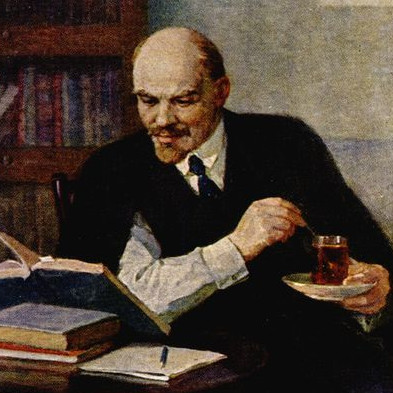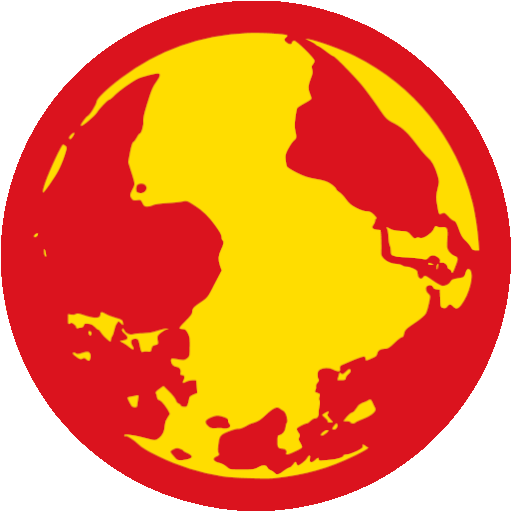And you’re the fish
- 0 Posts
- 15 Comments
Mfw libs think calling someone a tankie is an insult rather than a compliment 😂

 4·1 year ago
4·1 year agoIs this supposed to imply that the users of Lemmygrad believe capitalism is the best system? Lol
While I believe that people had differing opinions (they always do), I find it hard to accept that your anecdotal evidence speaks for all of the Baltic states populations that lived under the USSR.
By reducing everyone’s arguments against you to, “you just read what you did on the internet, I talked to real people therefore my argument is more valid”, the stance that you’re trying to take is not rooted in good faith.
Perhaps being able to cite surveys or census data, or at least some form of statistic, would add some foundation to your argument.
I’m gonna need some higher quality sources than Wikipedia for this one.
Everybody knows that Wikipedia is literally unrefutable fact, especially on controversial or political topics. Why would someone lie or omit facts on the internet??? Next you’re going to tell me that I can’t trust CIA press releases too!!!
If capitalism inevitably becomes imperialism, then wouldn’t the evolution of communism into something akin to Soviet Russia also be inevitable? Both are extreme worst case scenarios of a decent idea
What are you trying to say here? I think I know what you’re trying to say but it’s weird that you’re narrowing in on the Russian Soviet Republic.
I just watched a great video breaking down Black Panther today from F.D. Signifier. https://www.youtube.com/watch?v=hQEWa5R3m4U

 9·1 year ago
9·1 year agoNoted and implemented :) Thank you for recommending it comrade.

 6·1 year ago
6·1 year agoThanks comrade! I’ll add it to my list of sources :)

 271·1 year ago
271·1 year agoPerhaps I should share the wiki entries from r/TheDeprogram subreddit for some of our Lemmy visitors here.
The Uyghurs in Xinjiang
spoiler
(Note: This comment had to be trimmed down to fit the character limit, for the full response, see here)
Anti-Communists and Sinophobes claim that there is an ongoing genocide-- a modern-day holocaust, even-- happening right now in China. They say that Uyghur Muslims are being mass incarcerated; they are indoctrinated with propaganda in concentration camps; their organs are being harvested; they are being force-sterilized. These comically villainous allegations have little basis in reality and omit key context.
Background
Xinjiang, officially the Xinjiang Uyghur Autonomous Region, is a province located in the northwest of China. It is the largest province in China, covering an area of over 1.6 million square kilometers, and shares borders with eight other countries including Afghanistan, Kazakhstan, Russia, Mongolia, India, and Pakistan.
Xinjiang is a diverse region with a population of over 25 million people, made up of various ethnic groups including the Uyghur, Han Chinese, Kazakhs, Tajiks, and many others. The largest ethnic group in Xinjiang is the Uyghur who are predominantly Muslim and speak a Turkic language. It is also home to the ancient Silk Road cities of Kashgar and Turpan.
Since the early 2000s, there have been a number of violent incidents attributed to extremist Uyghur groups in Xinjiang including bombings, shootings, and knife attacks. In 2014-2016, the Chinese government launched a “Strike Hard” campaign to crack down on terrorism in Xinjiang, implementing strict security measures and detaining thousands of Uyghurs. In 2017, reports of human rights abuses in Xinjiang including mass detentions and forced labour, began to emerge.
Counterpoints
The Organisation of Islamic Cooperation (OIC) is the second largest organization after the United Nations with a membership of 57 states spread over four continents. The OIC released Resolutions on Muslim Communities and Muslim Minorities in the non-OIC Member States in 2019 which:
- Welcomes the outcomes of the visit conducted by the General Secretariat’s delegation upon invitation from the People’s Republic of China; commends the efforts of the People’s Republic of China in providing care to its Muslim citizens; and looks forward to further cooperation between the OIC and the People’s Republic of China.
In this same document, the OIC expressed much greater concern about the Rohingya Muslim Community in Myanmar, which the West was relatively silent on.
Over 50+ UN member states (mostly Muslim-majority nations) signed a letter (A/HRC/41/G/17) to the UN Human Rights Commission approving of the de-radicalization efforts in Xinjiang:
The World Bank sent a team to investigate in 2019 and found that, “The review did not substantiate the allegations.” (See: World Bank Statement on Review of Project in Xinjiang, China)
Even if you believe the deradicalization efforts are wholly unjustified, and that the mass detention of Uyghur’s amounts to a crime against humanity, it’s still not genocide. Even the U.S. State Department’s legal experts admit as much:
The U.S. State Department’s Office of the Legal Advisor concluded earlier this year that China’s mass imprisonment and forced labor of ethnic Uighurs in Xinjiang amounts to crimes against humanity—but there was insufficient evidence to prove genocide, placing the United States’ top diplomatic lawyers at odds with both the Trump and Biden administrations, according to three former and current U.S. officials.
State Department Lawyers Concluded Insufficient Evidence to Prove Genocide in China | Colum Lynch, Foreign Policy. (2021)
A Comparative Analysis: The War on Terror
The United States, in the wake of “9/11”, saw the threat of terrorism and violent extremism due to religious fundamentalism as a matter of national security. They invaded Afghanistan in October 2001 in response to the 9/11 attacks, with the goal of ousting the Taliban government that was harbouring Al-Qaeda. The US also launched the Iraq War in 2003 based on Iraq’s alleged possession of WMDs and links to terrorism. However, these claims turned out to be unfounded.
According to a report by Brown University’s Costs of War project, at least 897,000 people, including civilians, militants, and security forces, have been killed in Iraq, Afghanistan, Pakistan, Syria, Yemen, and other countries. Other estimates place the total number of deaths at over one million. The report estimated that many more may have died from indirect effects of war such as water loss and disease. The war has also resulted in the displacement of tens of millions of people, with estimates ranging from 37 million to over 59 million. The War on Terror also popularized such novel concepts as the “Military-Aged Male” which allowed the US military to exclude civilians killed by drone strikes from collateral damage statistics. (See: ‘Military Age Males’ in US Drone Strikes)
In summary:
- The U.S. responded by invading or bombing half a dozen countries, directly killing nearly a million and displacing tens of millions from their homes.
- China responded with a program of deradicalization and vocational training.
Which one of those responses sounds genocidal?
Side note: It is practically impossible to actually charge the U.S. with war crimes, because of the Hague Invasion Act.
Who is driving the Uyghur genocide narrative?
One of the main proponents of these narratives is Adrian Zenz, a German far-right fundamentalist Christian and Senior Fellow and Director in China Studies at the Victims of Communism Memorial Foundation, who believes he is “led by God” on a “mission” against China has driven much of the narrative. He relies heavily on limited and questionable data sources, particularly from anonymous and unverified Uyghur sources, coming up with estimates based on assumptions which are not supported by concrete evidence.
The World Uyghur Congress, headquartered in Germany, is funded by the National Endowment for Democracy (NED) which is a tool of U.S. foreign policy, using funding to support organizations that promote American interests rather than the interests of the local communities they claim to represent.
Radio Free Asia (RFA) is part of a larger project of U.S. imperialism in Asia, one that seeks to control the flow of information, undermine independent media, and advance American geopolitical interests in the region. Rather than providing an objective and impartial news source, RFA is a tool of U.S. foreign policy, one that seeks to shape the narrative in Asia in ways that serve the interests of the U.S. government and its allies.
The first country to call the treatment of Uyghurs a genocide was the United States of America. In 2021, the Secretary of State declared that China’s treatment of Uyghurs and other ethnic and religious minorities in Xinjiang constitutes “genocide” and “crimes against humanity.” Both the Trump and Biden administrations upheld this line.
Why is this narrative being promoted?
As materialists, we should always look first to the economic base for insight into issues occurring in the superstructure. The Belt and Road Initiative (BRI) is a massive Chinese infrastructure development project that aims to build economic corridors, ports, highways, railways, and other infrastructure projects across Asia, Africa, Europe, and the Middle East. Xinjiang is a key region for this project.
Promoting the Uyghur genocide narrative harms China and benefits the US in several ways. It portrays China as a human rights violator which could damage China’s reputation in the international community and which could lead to economic sanctions against China; this would harm China’s economy and give American an economic advantage in competing with China. It could also lead to more protests and violence in Xinjiang, which could further destabilize the region and threaten the longterm success of the BRI.
Additional Resources
See the full wiki article for more details and a list of additional resources.#

 232·1 year ago
232·1 year agoThis one too.
Tiananmen Square Protests
(Also known as the June Fourth Incident)
In Western media, the well-known story of the “Tiananmen Square Massacre” goes like this: the Chinese government declared martial law in 1989 and mobilized the military to suppress students who were protesting for democracy and freedom. According to western sources, on June 4th of that year, troops and tanks entered Tiananmen Square and fired on unarmed protesters, killing and injuring hundreds, if not thousands, of people. The more hyperbolic tellings of this story include claims of tanks running over students, machine guns being fired into the crowd, blood running in the streets like a river, etc.
Anti-Communists and Sinophobes commonly point to this incident as a classic example of authoritarianism and political repression under Communist regimes. The problem, of course, is that the actual events in Beijing on June 4th, 1989 unfolded quite differently than how they were depicted in the Western media at the time. Despite many more contemporary articles coming out that actually contradict some of the original claims and characterizations of the June Fourth Incident, the narrative of a “Tiananmen Square Massacre” persists.
Background
After Mao’s death in 1976, a power struggle ensued and the Gang of Four were purged, paving the way for Deng Xiaoping’s rise to power. Deng initiated economic reforms known as the “Four Modernizations,” which aimed to modernize and open up China’s economy to the world. These reforms led to significant economic growth and lifted millions of people out of poverty, but they also created significant inequality, corruption, and social unrest. This pivotal point in the PRC’s history is extremely controversial among Marxists today and a subject of much debate.
One of the key factors that contributed to the Tiananmen Square protests was the sense of social and economic inequality that many Chinese people felt as a result of Deng’s economic reforms. Many believed that the benefits of the country’s economic growth were not being distributed fairly, and that the government was not doing enough to address poverty, corruption, and other social issues.
Some saw the Four Modernizations as a betrayal of Maoist principles and a capitulation to Western capitalist interests. Others saw the reforms as essential for China’s economic development and modernization. Others still wanted even more liberalization and thought the reforms didn’t go far enough.
The protesters in Tiananmen were mostly students who did not represent the great mass of Chinese citizens, but instead represented a layer of the intelligentsia who wanted to be elevated and given more privileges such as more political power and higher wages.
Counterpoints
Jay Mathews, the first Beijing bureau chief for The Washington Post in 1979 and who returned in 1989 to help cover the Tiananmen demonstrations, wrote:
Over the last decade, many American reporters and editors have accepted a mythical version of that warm, bloody night. They repeated it often before and during Clinton’s trip. On the day the president arrived in Beijing, a Baltimore Sun headline (June 27, page 1A) referred to “Tiananmen, where Chinese students died.” A USA Today article (June 26, page 7A) called Tiananmen the place “where pro-democracy demonstrators were gunned down.” The Wall Street Journal (June 26, page A10) described “the Tiananmen Square massacre” where armed troops ordered to clear demonstrators from the square killed “hundreds or more.” The New York Post (June 25, page 22) said the square was “the site of the student slaughter.”
The problem is this: as far as can be determined from the available evidence, no one died that night in Tiananmen Square.
- Jay Matthews. (1998). The Myth of Tiananmen and the Price of a Passive Press. Columbia Journalism Review.
Reporters from the BBC, CBS News, and the New York Times who were in Beijing on June 4, 1989, all agree there was no massacre.
Secret cables from the United States embassy in Beijing have shown there was no bloodshed inside the square:
Cables, obtained by WikiLeaks and released exclusively by The Daily Telegraph, partly confirm the Chinese government’s account of the early hours of June 4, 1989, which has always insisted that soldiers did not massacre demonstrators inside Tiananmen Square
- Malcolm Moore. (2011). Wikileaks: no bloodshed inside Tiananmen Square, cables claim
Gregory Clark, a former Australian diplomat, and Chinese-speaking correspondent of the International Business Times, wrote:
The original story of Chinese troops on the night of 3 and 4 June, 1989 machine-gunning hundreds of innocent student protesters in Beijing’s iconic Tiananmen Square has since been thoroughly discredited by the many witnesses there at the time — among them a Spanish TVE television crew, a Reuters correspondent and protesters themselves, who say that nothing happened other than a military unit entering and asking several hundred of those remaining to leave the Square late that night.
Yet none of this has stopped the massacre from being revived constantly, and believed. All that has happened is that the location has been changed – from the Square itself to the streets leading to the Square.
- Gregory Clark. (2014). Tiananmen Square Massacre is a Myth, All We’re ‘Remembering’ are British Lies
Thomas Hon Wing Polin, writing for CounterPunch, wrote:
The most reliable estimate, from many sources, was that the tragedy took 200-300 lives. Few were students, many were rebellious workers, plus thugs with lethal weapons and hapless bystanders. Some calculations have up to half the dead being PLA soldiers trapped in their armoured personnel carriers, buses and tanks as the vehicles were torched. Others were killed and brutally mutilated by protesters with various implements. No one died in Tiananmen Square; most deaths occurred on nearby Chang’an Avenue, many up to a kilometer or more away from the square.
More than once, government negotiators almost reached a truce with students in the square, only to be sabotaged by radical youth leaders seemingly bent on bloodshed. And the demands of the protesters focused on corruption, not democracy.
All these facts were known to the US and other governments shortly after the crackdown. Few if any were reported by Western mainstream media, even today.
- Thomas Hon Wing Palin. (2017). Tiananmen: the Empire’s Big Lie
(Emphasis mine)
And it was, indeed, bloodshed that the student leaders wanted. In this interview, you can hear one of the student leaders, Chai Ling, ghoulishly explaining how she tried to bait the Chinese government into actually committing a massacre. (She herself made sure to stay out of the square.): Excerpts of interviews with Tiananmen Square protest leaders
This Twitter thread contains many pictures and videos showing protesters killing soldiers, commandeering military vehicles, torching military transports, etc.
Following the crackdown, through Operation Yellowbird, many of the student leaders escaped to the United States with the help of the CIA, where they almost all gained privileged positions.
Additional Resources
Video Essays:
- Truth about The Tiananmen Square Protests | Tovarishch Endymion (2019)
- Tiananmen Square “Massacre”, A Propaganda Hoax | TeleSUR English (2019)
- All The Questions Socialists Are Asked, Answered (TIMESTAMPED) | Hakim (2021)
Books, Articles, or Essays:
- Tiananmen Protests Reading List | Qiao Collective
- How psy-ops warriors fooled me about Tiananmen Square: a warning | Nury Vittachi, Friday (2022)
- 1989: Tiananmen Square ‘massacre’ was a myth | Deirdre Griswold, Workers World (2022)
- Massacre? What Massacre? 25 Years Later: What really happened at Tiananmen Square? | Kim Petersen, Dissident Voice (2014)
- Tiananmen: The Massacre that Wasn’t | Brian Becker, Liberation News (2019)
- Reflections on Tiananmen Square and the attempt to end Chinese socialism | Mick Kelly, FightBack! News (2019)
- The Tian’anmen Square “Massacre” The West’s Most Persuasive, Most Pervasive Lie. | Tom, Mango Press (2021)

 6·1 year ago
6·1 year agoThis is a really well sourced, theory based explanation. Cheers for sharing the material, it’s always good to have theory backing up why we hold the ideas.
This is a great example of how this community can be really educationally helpful.

 6·1 year ago
6·1 year agoI haven’t come across users like this before, it could be a combination of all of the factors you listed at the bottom. I would be more inclined to believe these users are people who are possibly new to a movement and don’t fully understand what they’re taking part in.
I can only really speak to the general communism umbrella but lack of theory leads to weird contradictions like the one’s you have pointed out.
Omg are you saying there might be tankies???